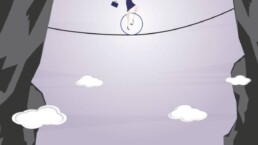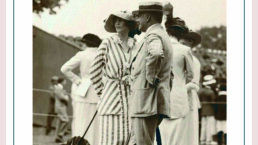
This Letter of Inspiration will explore what a CEO or HR manager can learn from fairy tales and Buddhist economics.
Happily-ever-after
Have you ever wondered why the happy ending in fairy tales is always the wedding of the main characters? Usually this couple have fought their way through great challenges in order to ultimately be together. In The Beauty and the Beast, a young lady is abducted to live with a beast, a creature that has been bewitched and lost its human form. Of course, only the magic of true love can break this spell. We can all guess what follows: an overjoyed couple who marry and live happily ever after.
This is only one example of many. But what about real life after the big day? The only thing the fairy tale authors tell us about the “after” is that it was always happy. Cinderella, Beauty and the Beast, Aladdin – all these stories stop abruptly after the wedding, at the point of peak infatuation. That’s as far as it goes dramaturgically, with the statement “they lived happily ever after”; not from climax to climax, but in a continuous linear fashion.
What does that look like in reality? Much of the infatuation phase can also be found in customer and business relationships. At the beginning, it's exciting, new, uncertain, interesting, but once the two parties commit, it gets serious. There is hardly any turning back after the “I do” (signing the employment contract, starting a new business relationship, etc.) and expectations are high. How do you manage to fulfill these expectations from the infatuation phase in everyday business life? Can the charm of the unknown also be transferred to this second phase? We find few answers to this in fairy tales. So let's take a look at the real world.
Before getting married, we have to realize that we first have to find the right partner. If you look at the statistics, you can see that 60 to 80% of M&A (mergers & acquisitions) deals fail. Once someone is hired, the turnover rate in Germany in retail, real estate, education and training is currently between 30 and 40 %. This means that just under one in two relationships are dissolved. What are the reasons for this?
The probability of finding and keeping the right (business) partner, customer or employee is therefore a great challenge, perhaps comparable to that in the beginning of a fairy tale: the beast wants to win over the beauty. What is the secret to success in these positive examples? Finding the magic of seduction even in the familiar. In Darwin's second theory of evolution, it is not the adaptor (as in the first theory), but the aesthete who wins.
Under theories of evolutionary aesthetics, the assumption is that the basic aesthetic preferences of Homo sapiens have evolved to improve their successful survival and reproduction. Darwin points to our desire for variety. For me, this is a possible key to a happily-ever-after with highlights and without linearity. The seduction lies in the variety that can also be offered in the familiar.
Whether we are talking about relationships with employees, customers or business partners, sameness and repetition is a killer. Let's get creative and think about what we can do to stand out from the sea of monotony. The key word is individuality. Working models adapted to the individual employee and their starting position. Projects that are tailored to the customer’s needs instead of a copy/paste approach. Genuine inspiration, like that of an artist. And I’m sure that every now and then your wife or husband would also enjoy a change from the standard bouquet of flowers for Valentine's Day.
What has inspired me recently? Buddhist economy.
I stumbled across the term “Buddhist Economics” (drawing on the book Small is Beautiful, by German economist K.F. Schumacher), which emphasizes the well-being of all members and of the environment rather than the pursuit of infinite growth and profit.
Buddhist economics sees the function of work as activating and developing one's abilities, letting go of the ego and the corporation, and creating goods and services for a better (happier) existence. Instead of using consumption as an indicator of standard of living, this form of economics values optimal consumption paired with the least effort, so that our energy can be directed towards other creative endeavors.
To me, this sounds very much like an approach that will appeal to future generations, and one that every HR department and management team will have to address. Examples of implications for companies and entrepreneurs might be:
- Implementing a pay system based on the skills and contributions of each employee
- Promote a corporate culture that encourages employees to see their work as a contribution to the common good rather than just a source of income
- Maintain open and supportive communication where every employee can contribute and where decisions are based on the consensus of those involved
- Invest a portion of profits in social or cultural projects and charitable causes to help improve or educate the community
A Buddhist economy also has similarities with my fairy tale example, above. It is about being actively involved and focusing on the common good, not just on one’s self. What does “it” (the whole) need in order to continue? Where can I make a contribution that goes beyond simply satisfying needs? Some of you may remember the Christmas story of little Lord Fauntleroy: a little boy who unconditionally puts the good of the community at the center of everything he does, and whose infectious joy ends up transforming his old and grumpy grandfather.

Share

